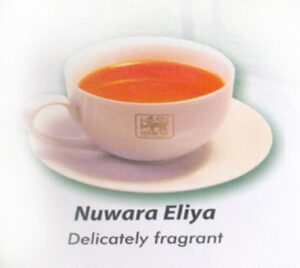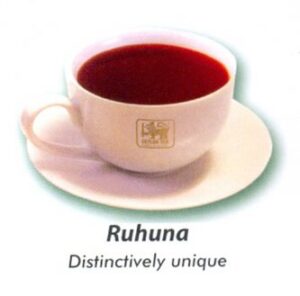
Story of Ceylon Tea
James Taylor arrived in Ceylon in 1852, settling down at the Loolecondera Estate, Galaha. He begins a 19-acre tea plantation on the Loolecondera Estate in 1867, laying the foundation for what would become Sri Lanka’s largest export industry for over a century.
In 1872, a fully equipped tea factory began operating on the Loolecondera Estate.
In 1873, Ceylon Tea made its international debut when twenty-three pounds of tea produced by James Taylor reached London.

Celebrated to be the finest in the world, the unique flavour, fragrance and freshness of Ceylon Tea set it apart from the rest. Represented by the Lion logo and the ‘Ceylon Tea’ trademarks assuring that it’s a quality product of Sri Lanka, Ceylon Tea is exclusively handpicked by expert tea pluckers and is mostly produced through orthodox and artisanal methods. It is also the freshest tea available in the global market, expertly packed within 3 weeks of harvesting, to preserve freshness, flavour, and aroma. Ceylon Tea is the first Ozone Friendly Tea in the world and does not use Methyl-Bromide during packaging and shipping.
Sri Lankan tea (known for generations as Ceylon Tea) carries behind it a heritage and success story like no other. A product that began as a diversification experiment in 1867 spanning just 19 acres of land has today surpassed all geographical borders to satisfy 19% of global demand. Reputed for its signature taste and aroma, Sri Lanka has become the world’s third largest tea exporter to the world, the country’s largest employer and has the distinction of supplying tea to the Olympic and Commonwealth Games. It is a great equalizer, demanding attention from the counter of the smallest eatery to the most exclusive tea-bars in the world.
Ceylon Tea is also the cleanest tea in the world in terms of pesticide residues, a fact confirmed by the ISO Technical Committee. Sri Lanka was also the first to achieve the “Ozone Friendly Tea” label recognized under the Montreal Protocol Treaty and is the proud owner of the first Ethical Tea Brand of the World recognized by the United Nations Global Compact.
Agro Climatic Districts
Nuwara Eliya

Nuwara Eliya, the best-known of Sri Lanka’s tea-growing districts, is the most mountainous, and has the highest average elevation. Combined with low temperature, this produces teas of exquisite bouquet. The infusion in the cup is the lightest (palest) of all the types of Ceylon Tea, with a golden hue and a delicately fragrant flavour. Sought after grades include whole-leaf Orange Pekoe (OP) and Broken Orange Pekoe (BOP).
GRADES OF TEA
OP, BOPF, BOP, DUST TEA AND OTHER VARIETIES
Dimbula

Between Nuwara Eliya and Horton Plains lies the district of Dimbula, whose teas are defined as “high grown” as all estates exceed an altitude of 1,250m (4000 Feet). The complex topography of the region produces a variety of microclimates, which produce differences in flavour – sometimes jasmine mixed with cypress. All, however, share the Dimbula character: a tea that produces a fine golden-orange hue in the cup, and which is refreshingly mellow.
GRADES OF TEA
OP, BOPF, BOP, DUST TEA AND OTHER VARIETIES
Uva

The remote Uva district is exposed to the winds of both northeast and southwest monsoons, believed to endow the tea produced here with a special, unmistakable character and exotically aromatic flavour. It was with tea grown on his Uva estates that Thomas Lipton, the Victorian magnate, persuaded Americans to drink tea. The mellow, smooth taste of Uva tea, once experienced, is easily distinguished.
GRADES OF TEA
OP, BOPF, BOP, DUST TEA AND OTHER VARIETIES
Ruhuna

The teas of the Ruhuna district are defined as “low-grown” as they are cultivated at an altitude not exceeding 600m (2000 Ft) comprising vast sub regions from coastal plains to Southern edge of Sinharaja Rain Forest. The soil, combined with the low elevation of the estates, causes the tea-bush to grow rapidly, producing a long, beautiful leaf. Full-flavoured black tea is a distinctively unique Ruhuna speciality.
GRADES OF TEA
OP, BOPF, BOP, DUST TEA AND OTHER VARIETIES
